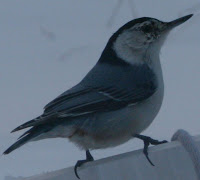
What an amazing sight: the first lady out there digging up the White House lawn to put in an organic victory garden. Digging up grass that's well established is hard work. Of course, I'm waiting for the pictures from after the ground-breaking ceremony. I'm sure the staff got in there and prepared the raised bed soil properly. For an 1100 sq. ft. garden, it takes some work. Unless you're looking to get exercise, like I am, just bring in the damn tiller. Here's the NY Times story on the White House garden. I'll keep an eye out for the follow up. I can't think of anything better for the organic food movement to have happen than the President pulling weeds.
I'm terracing my way up the little hill side now. I prefer it, as I can have better drainage near the terrace walls, and plant a better variety of things in a smaller area. I take my time with a little shovel and a big ice scraper, and I cut the hillside out in a brick, which I flip over and rake level.

But this will be the last time I bust my butt turning that former grass patch. My disability limits me, but I always was a lazy gardener. That's why I like to read Mort Mather's organic gardening articles. Once you're established, no-till is the way to go. I just layer on new compost every year, maybe poke it a little with a pitch fork.
Funny, our seeds and starter trays showed up today, and I've been planting this afternoon, watching birds show up so fat with eggs that they won't fly away when I go out there. I got a chance to think back over the years, all the gardening I've done in different places like the mountains near LA, Hawaii, and now here in Zone 5a. All the years of advocating organic agriculture (my organic gardening web site was one of the first), and here we are, a first lady starting an organic food garden on the White House lawn.
Amazing.















